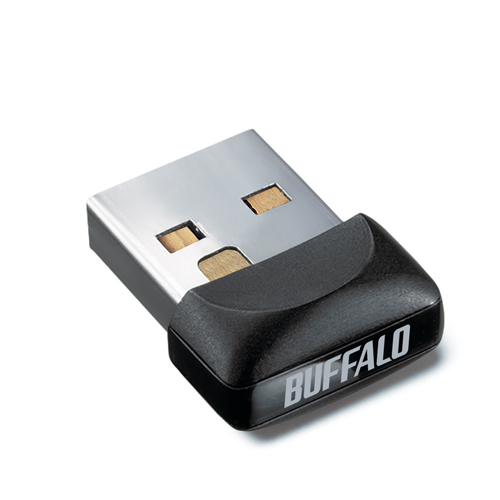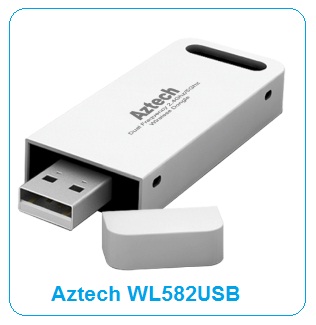The USB 3.0 devices attached to the adapter are recognized by Windows and appear to be functioning correctly. Nevertheless, in Device Manager my USB 3.0 adapter is an Unknown USB Device (Link in Compliance Mode). In Device Manager the Hardware ID is USB VID0000&PID0008 6&2F6BE58&0&2 (The characters after PID0008 are likely not relevant.). Access to mobile and removable storage devices such as USB thumb drives and external hard disk drives will be protected by password, PIN, or passphrase. If USB media and devices are not protected by strong access control techniques, unauthorized access may put sensitive data at risk. USB 3.0 B-Type connector is designed for USB peripherals, such as printer, upstream port on hub, or other larger peripheral devices. This connector can support USB 3.0 SuperSpeed application and also carry USB 2.0 low speed data in the same time. A USB 3.0 B plug cannot be plugged in to a USB 2.0 B socket due to its plug shape change.
How do you make a choice when two devices do the same thing? How do you decide which one to pick and which one serves your purpose? These questions will buzz in your mind when you have to choose between PCI Wi-Fi cards and USB adapters.
They are both functionally the same. They both work extremely well. So, what’s the difference? Why are you being forced to choose between them? This article will answer all your doubts. We shall talk about their differences and uses so that it is easy for you going forward. Let’s start.
PCIe vs USB Wi-Fi
It all depends on your comfort level, to be honest. If you prefer ultimate convenience and do not like fiddling with the hardware, USB adapters are the right choice for you. They are also the best bet if you have a laptop. On the other hand, if you really need a strong signal and do not want to compromise on it, go for a PCIe adapter and power up your computer with superb Wi-Fi!
Keep in mind, though, that PCIe cards are more expensive than USB adapters. You should be sure to pick the right one according to your preferences, thus.
What is a PCI Wi-Fi card?
PCI adapters allow excellent Wi-Fi connectivity thanks to their antenna. They pick up Wi-Fi easily and give you a seamless internet connectivity. These devices go into the hardware of your PC, and the antennae stick out from the back.
These adapters are also customizable. This means you can remove an antenna or two and replace with better ones if the signal is not too strong or if you need super-fast Internet at particular times. This particular feature makes them better than USB cards at picking up signals and delivering great results.
Another huge advantage with the PCI card is that you don’t have to use a USB slot for it. USB slots are super precious because they are almost universal and allow you to connect other devices. A Wi-Fi card using up one entire slot can be difficult if you want to connect multiple devices. With a PCI adapter, you eliminate this concern altogether.
What is a USB adapter?
This is pretty self-explanatory. The USB adapter goes into the good old USB slot. It is extremely easy to use, and you do not need to worry about touching the hardware. The USB adapters are actually newer and weren’t really received well, but now, many people are warming up to them especially for the convenience.
The market has multiple varieties of USB adapters such as those with antennae and those that have a cradle. The cradle enables you to position the USB where the signal is the best.
A USB adapter is the best choice for those with laptops because you can’t physically install a PCI adapter in them. Also, USB adapters are easily affordable. You won’t feel the slightest pinch while purchasing one of them.

Conclusion
PCIe Wi-Fi cards and USB adapters, both are good options. They do their job very well. We are slightly inclined towards PCIe because they are more reliable when it comes to signal strength and we would rather use our USB ports for something else. However, they don’t come very cheap. That’s why we urge you to list out your priorities and see which of these network adapters works best for you.
We would love to know which one you ended up purchasing and why! Your insights could end up helping us improve this article. So, please feel free to Comment.

Industrial facilities’ cybersecurity is very critical for the national security of every state, and comes once more into focus following the recent Honeywell’s Industrial USB Threat Report.
With increasing pressure to limit network access to industrial control systems, industrial plant dependence upon USB removable media to transfer information, files, patches and updates has been greater than ever. At the same time, past research into USB threats has shown that portable USB drives are one of the top threat vectors impacting industrial control systems.
USB represents an even greater threat than spreading malware: a USB device can be used to attack systems directly, using the USB interface as a powerful attack vector. Ever since the Stuxnet attack used a USB flash drive to obliterate any semblance of an air gap in an Iranian nuclear facility, the industry has been well aware of the vulnerability that USB devices can introduce to their operations.
Usb Compliance Network & Wireless Cards Driver Download For Windows 7
When we consider threats to industrial systems, specifically crafted malware – such as the Industroyer strain which cut off the power to the city of Kiev in Ukraine for an hour – often comes to mind. Many of the operating systems, controls and equipment used to power industrial facilities have legacy components which were never designed for over-the-air (OTA) updates or cybersecurity at all and due to memory, size, and hardware limitations may not be suitable for direct protection.
A way to mitigate these risks is to implement strong perimeter defense, but if a USB key is directly connected to an industrial system, these protections can easily be circumvented. In 2017, Honeywell introduced its Secure Media Exchange technology that is designed to manage USB security by giving users a place to plug in and check devices for approved use. Through this capability, Honeywell has been able to gather the data derived from scanning and controlling USB devices at 50 customer locations.
Report Findings
Usb Compliance Network & Wireless Cards Driver Download For Windows 8
What the research shows is that almost half of those customers (44 percent) have detected and blocked at least one file with a security issue. In addition, 26 percent of the detected threats were capable of significant disruption to the operations, including loss of view or loss of control.
“The data showed much more serious threats than we expected,” said Eric Knapp, director of strategic innovation for Honeywell Industrial Cyber Security. “And taken together, the results indicate that a number of these threats were targeted and intentional” while “Many of which can lead to serious and dangerous situations at sites that handle industrial processes.”
The threats targeted a range of industrial sites, including refineries, chemical plants and pulp and paper facilities around the world. About one in six of the threats specifically targeted industrial control systems (ICSs) or Internet of Things (IoT) devices.
Among the threats detected, 15 percent were high-profile, including well-known issues such as Triton, Mirai and WannaCry as well as variants of Stuxnet. Though these threats have been known to be in the wild, what the Honeywell Industry Cyber Security team considered worrisome was the fact that these threats were trying to get into industrial control facilities through removable storage devices in a relatively high density.
In comparative tests, up to 11 percent of the threats discovered were not reliably detected by more traditional anti-malware technology. Although the type and behavior of the malware detected varied considerably, trojans, which can be spread very effectively through USB devices, accounted for 55 percent of the malicious files. Other malware types discovered included bots (11 percent), hacktools (6 percent) and potentially unwanted applications (5 percent).
Usb Compliance Network & Wireless Cards Driver Download For Windows Xp
“Customers already know these threats exist, but many believe they aren’t the targets of these high-profile attacks,” Knapp said. “This data shows otherwise and underscores the need for advanced systems to detect these threats.”
Usb Compliance Network & Wireless Cards Driver Download For Windows 10
Implications for Industrial Facilities Operators
The report findings clearly illustrate the importance of adopting and adhering to common industrial cybersecurity best practices since “the data provides ample evidence that USB hygiene is generally poor.” The report provides some practical guidelines on how to enhance USB hygiene.
For a start, USB security must include technical controls and enforcement. Relying on policy updates or people training alone will not suffice for scalable threat prevention.
Second, outbound network connectivity from process control networks should be tightly controlled, and such restrictions should be enforced by network switches, routers and firewalls. It is vital that anti-virus software deployed in process control facilities be updated daily to be at all effective. In addition, patching and hardening of end nodes is necessary despite the challenges of patching production systems.
Last but not least, additional cybersecurity education is required for proper handling and use of removable storage. This can and should be addressed through employee and partner awareness programs, operational personnel cybersecurity training and sound security policy development.
Final thoughts
In the years since Stuxnet, regulators have looked to address the risk of using portable media. In April, for example, the Federal Energy Regulatory Commission ordered the revision of power reliability standards “to mitigate the risk of malicious code” stemming from such devices. But this report has also highlighted that it is important to deliver security solutions that are not either completely unusable or productivity stoppers.

“When you make things painful, people are going to find a way around it,” as Seth Carpenter, cybersecurity technologist for Honeywell, commented during an interview at the most recent Honeywell Users Group (HUG) meeting in San Antonio.
For information on how Tripwire’s solutions use these methods and other techniques to defend organization’s ICS systems, click here.
